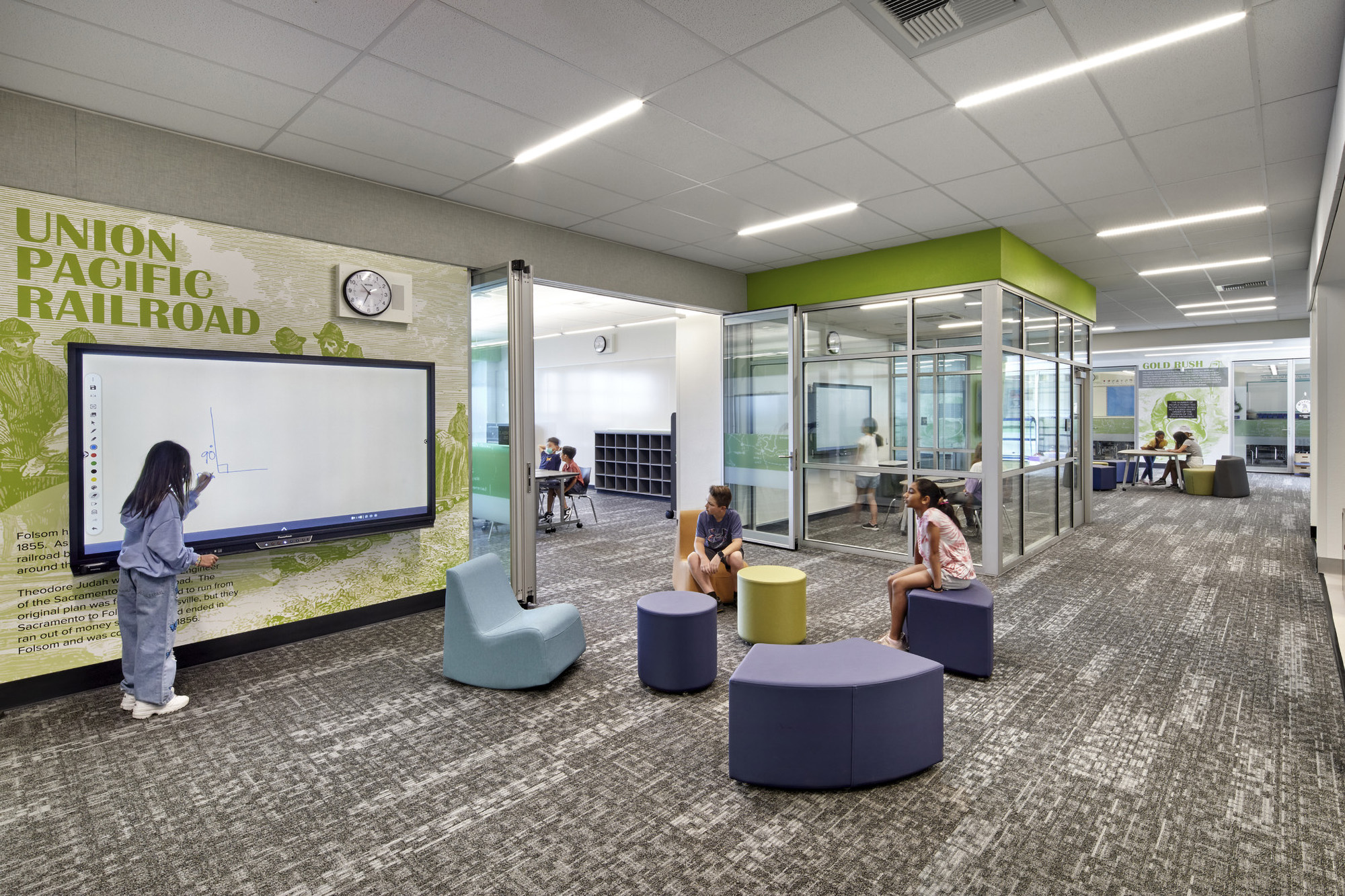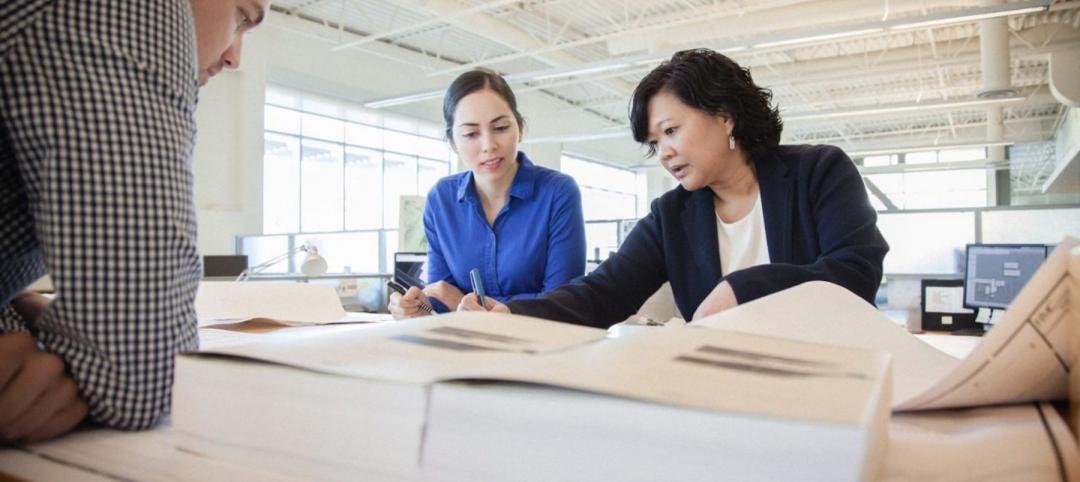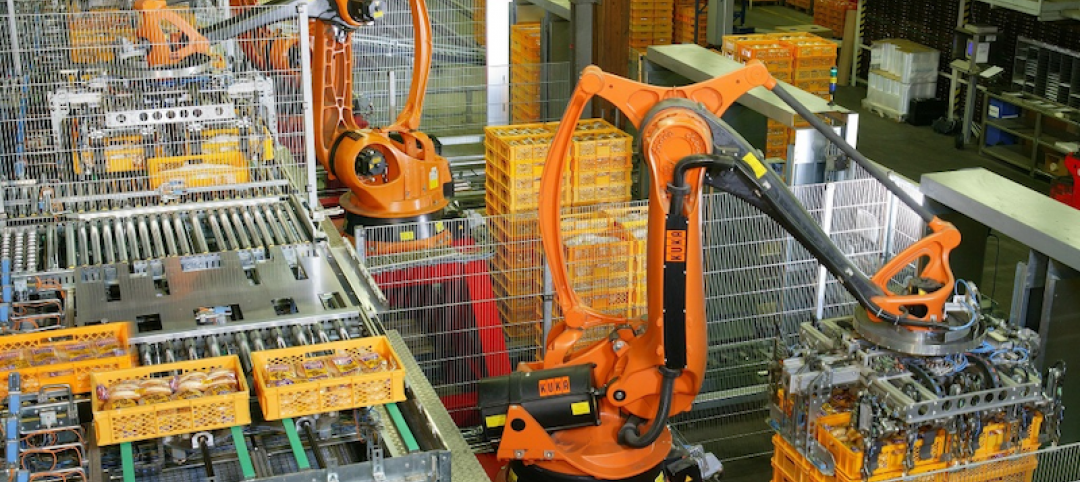In a world where technology’s rapid pace has reshaped how we live, work, and communicate, it should be no surprise that it’s also changing the PreK-12 education landscape. This digital transformation in education has brought about a new era of learning that extends beyond the traditional classroom setting.
Technology integration in schools has revolutionized teaching and learning and opened doors to various challenges and possibilities. For school districts and architects, this means reimagining school design to be future-ready, capable of accommodating ever-changing technological advancements, and ensuring that students are equipped for the digital age.
Integrating Technology Into Educational Design
In educational design, technology transcends the status of an add-on; it constitutes the very fabric of our future. This vision extends beyond conventional information technology (IT) infrastructure, encompassing the ever-evolving landscape of software and emerging technologies.
Forward-thinking designs must grapple with the demands of high-speed wireless connectivity, the intricacies of hybrid teaching and learning platforms, and the seamless integration of physical and digital learning modalities. Achieving a delicate equilibrium between performance requirements and adaptability is the linchpin in formulating a comprehensive design solution.
The upheaval caused by the Coronavirus pandemic thrust education into the digital frontier, demanding an unprecedented leap in the accessibility of learning across schools. While challenges persist, spanning behavioral adjustments to ensuring ample bandwidth, the widespread adoption of supportive technology has surged. The current focus pivots towards creating digital solutions tailored to meet learning objectives and pioneer novel experiences, capitalizing on the potential of mixed reality and interactive technologies.
Embracing the Internet of Things and Experience Design Technologies
The embrace of the Internet of Things (IoT) has become pivotal in the ever-evolving educational technology landscape. It elevates operational efficiency and ensures essential security measures and comfort for those within the school premises. A centralized digital management system, complemented by machine intelligence, fine-tunes performance, validates space utilization, and anticipates emerging needs.
Leading the charge are Experience Design technologies, including augmented or mixed reality, virtual reality, and interactive touch and display, all tailored to harness the inherent capabilities of digital-native students. To guarantee that technology remains current and adaptable to future shifts, embedding technological considerations right from the inception of the design process is imperative.
Early client engagement enables meticulous planning, factoring in costs, short-term objectives, and long-term campus-level decision-making. The resulting solutions must serve their intended purpose and accommodate technology’s swift evolution and expansion.
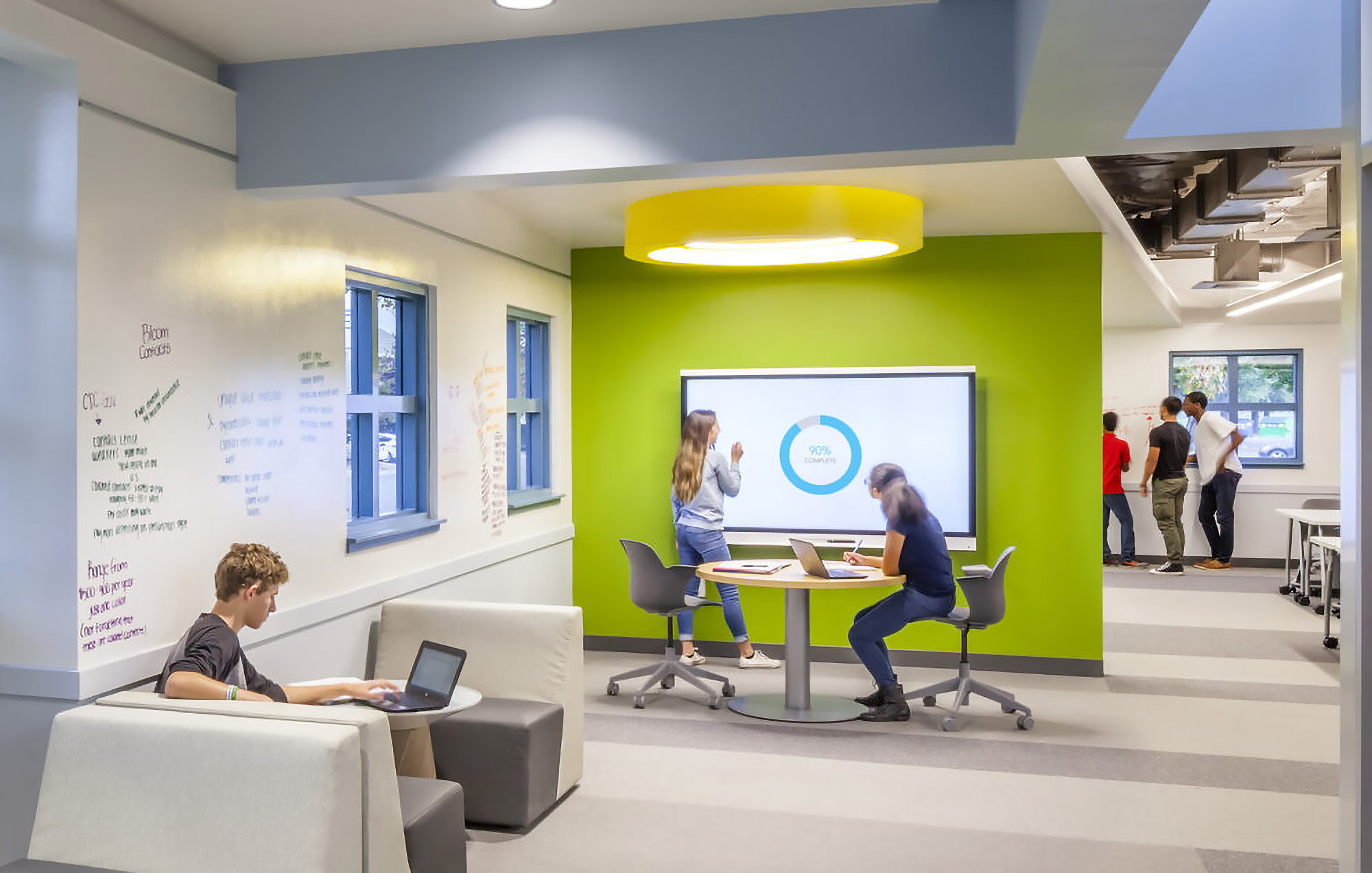
Navigating the Cost of Integration
Nationwide, schools grapple with integrating technology due to its associated costs. The value of technologically advanced buildings often gets lost in translation, leading to short-sighted cost management decisions that set the stage for rapid technology turnover. The crux lies in recognizing technology as an indispensable facet of the overall design experience, attending to not just the walls and windows but also the digital needs of the students.
Navigating the delicate balance between pursuing cutting-edge technology and budget constraints is a nuanced dance. While clients frequently aspire to adopt current or forward-thinking solutions, the alignment becomes smoother when collaboration occurs early in the design process. The encompassing “cost of technology” spans acquisition and premature replacement expenses, underscoring the significance of meticulous and forward-looking technology planning.
Technology as a Transformative Tool in Education
The pandemic underscored the crucial role of technology in education, facilitating the shift to remote and hybrid learning. Beyond merely addressing logistical challenges, it has provided opportunities for a complete reimagining of the teaching process.
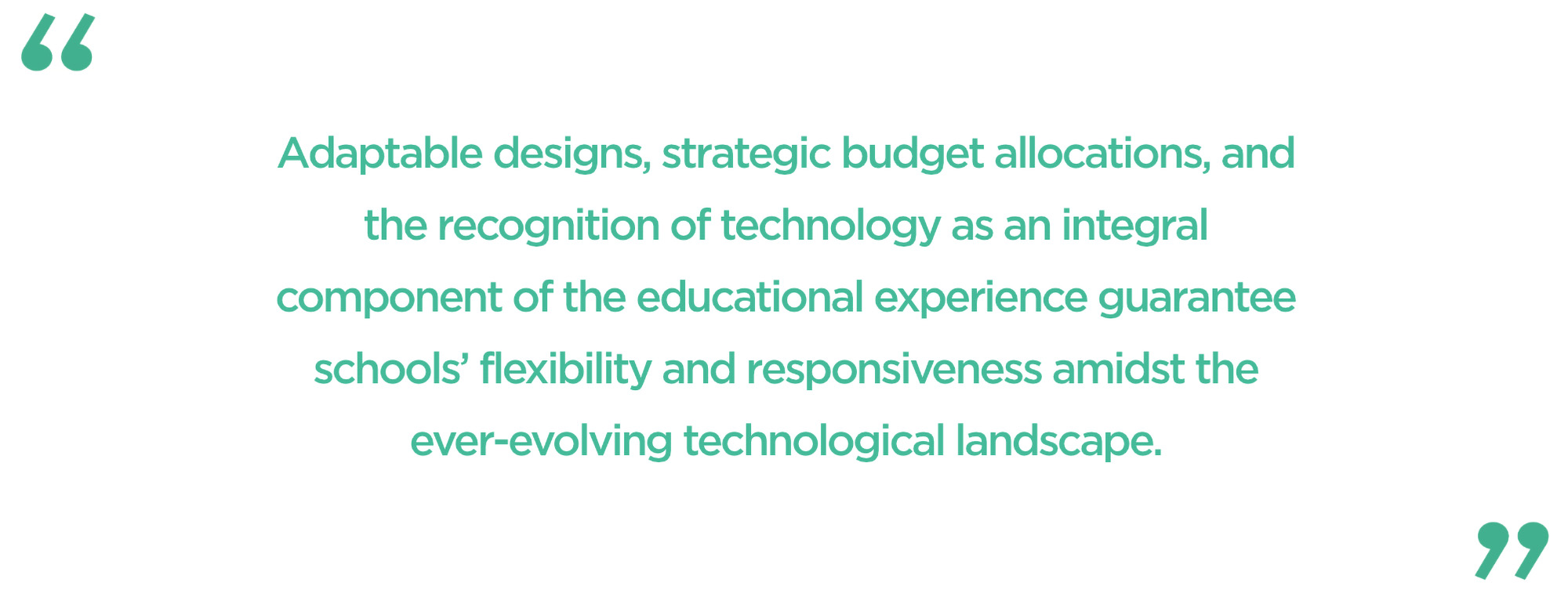
Technology is not a substitute for teaching; it is a dynamic tool that amplifies and enhances the interaction between educators and students, providing flexibility and access to diverse materials and fostering expansive collaboration.
A standout illustration of this transformative power is found in digital whiteboarding—an innovative tool designed for collaboration. It transcends the limitations of traditional learning hours, evolving into a dynamic platform that sustains continuous student interaction and engagement.
Other transformative tech examples include:
- Mixed reality brings real-world objects to students at an accurate scale in a tangible, interactive way that a screen cannot provide.
- Artificial Intelligence (AI) is heralded as the most transformative technology in education. Its ability to predict and assess learning allows for tailored, measured learning paths.
- Virtual Reality (VR) expands the learning experience beyond traditional audio and video, providing interactive and immersive encounters.
- Robotics not only aids those with physical and cognitive impairments but also offers learning opportunities in a world increasingly shaped by automation.
- Career Technical Education (CTE) programs become crucial for preparing students for the workforce as technology reshapes industries. Integrating technology into these programs offers early career paths and hands-on learning experiences relevant to emerging industries like electric vehicles and clean energy.
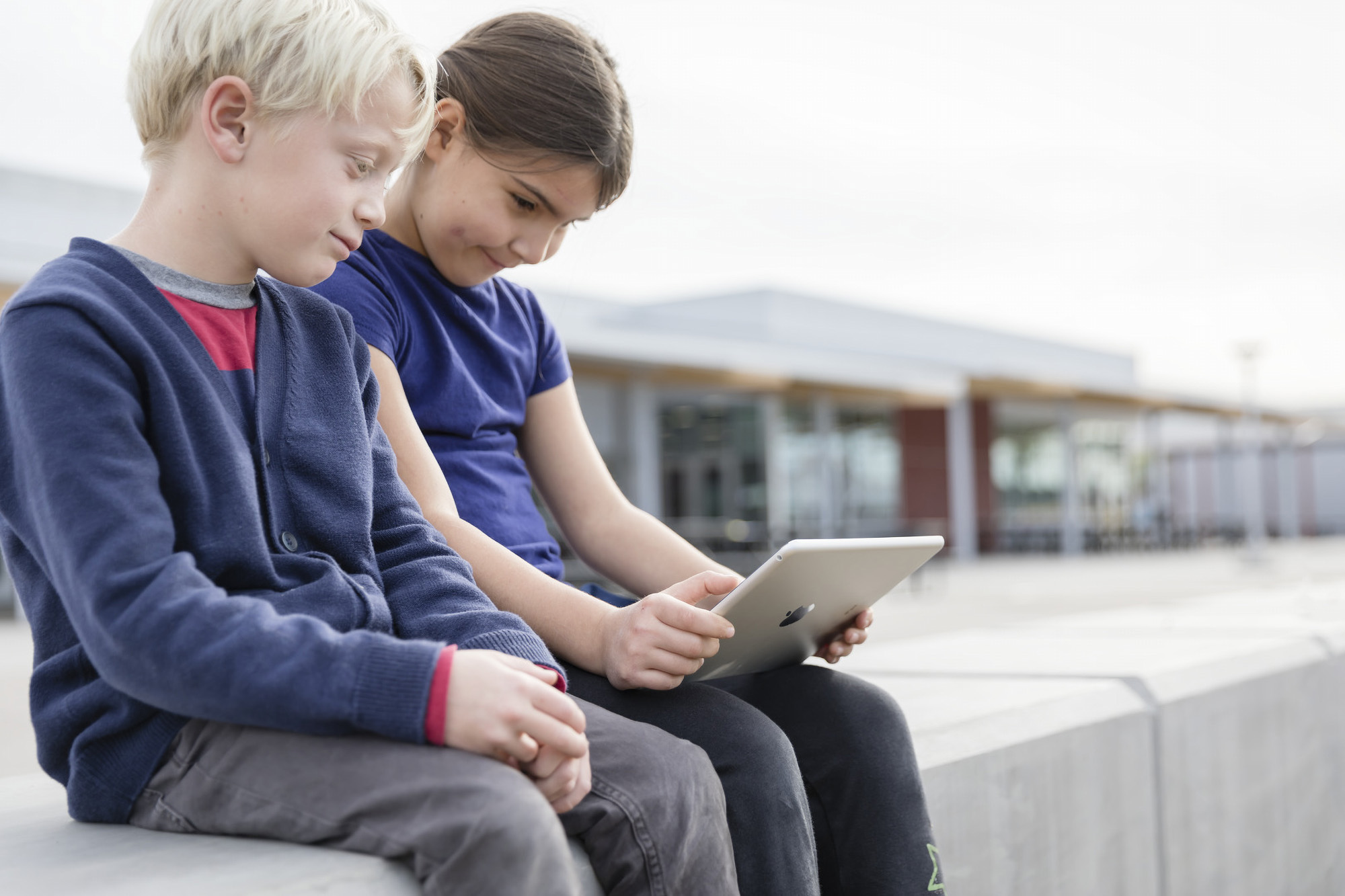
Digital Dilemma: Addressing Screen Time Overload
The pervasive presence of technology in contemporary life has given rise to apprehensions regarding excessive screen time, particularly among digital-native students. As schools grapple with the delicate task of harmonizing technology integration with fostering healthy engagement, granting access to technology and offering guidance on its responsible utilization is imperative.
Unraveling the enigma of screen time is a formidable challenge in a world where digital interfaces reign supreme. Augmented or mixed reality emerges as a compelling alternative, seamlessly melding digital tools with physical objects and experiences, anchoring students in the tangible realm. The importance of curbing screen time is accentuated, particularly for younger children.
The crux lies in perceiving digital gateways as instruments that augment learning rather than supplant it. Encouraging children to prioritize screen time for educational pursuits ensures a wholesome and constructive relationship with technology.
Future-Ready Schools: Strategies for Success
The foundation for future-ready schools is laid in the thoughtful considerations during the initial design phase. Adaptable designs, strategic budget allocations, and the recognition of technology as an integral component of the educational experience guarantee schools’ flexibility and responsiveness amidst the ever-evolving technological landscape.
Proactive planning emerges as the linchpin for retaining flexibility while securing a meaningful return on investment. By integrating technology considerations at the outset, schools can make informed decisions that align short-term goals with long-term adaptability. This approach ensures that today’s investments in educational technology withstand the tests of time and technological evolution.

Key Considerations
- Adaptable Design: To address the challenge of rapid technological evolution, architects are incorporating adaptable design principles. These principles involve creating flexible learning environments that can easily accommodate new technologies as they emerge without the need for extensive reconstruction. This approach allows schools to adapt to the changing needs of both students and educators.
- Strategic Budget Allocation: Carefully allocating budget resources enables schools to invest strategically in technology that offers significant educational benefits. Long-term planning and partnerships with technology providers are essential in making informed decisions about where to invest resources for the most significant impact.
- Tech as a Tool, not a Replacement: Recognizing that technology should be a tool for teachers rather than a replacement is a fundamental solution. Effective technology integration enhances the teaching and learning experience while empowering educators. It’s about using technology to complement traditional teaching methods, balancing face-to-face interaction and digital tools.
- Engagement Strategies: Schools are devising engagement strategies and implementing technologies that cater to the needs and preferences of digital natives. These strategies include gamification, interactive platforms, and experiential learning. Schools can mitigate screen time concerns by making learning more interactive and engaging and ensuring that technology enhances the educational experience.
- Cutting-Edge Tech Integration: AI, VR, robotics, and CTE programs are finding their place in school designs. These technologies offer numerous educational benefits, from personalized learning experiences to practical skill development. Integrating these advanced technologies can prepare students for the digital workforce and foster innovation.
- Future-ready Frameworks: Architects and schools should adopt future-ready frameworks that emphasize flexibility and adaptability. Schools ensure their investments remain valuable over time by creating a foundation accommodating emerging tech. This approach involves building infrastructure and spaces that can be easily modified to incorporate new technologies and educational approaches.
In forging the path forward, one thing remains certain—the destiny of education is inextricably linked to the march of technological progress. By wholeheartedly embracing technology from the genesis of school design, we can craft learning environments that transcend mere readiness for the future; they become realms of enrichment and transformation for tomorrow’s students.
Our collaborative efforts with PreK-12 school districts are yielding a blueprint for the schools of the next generation, painting a vivid picture of an educational journey infused with technology that promises to leave a positive impact on future generations.
More from Author
HMC Architects | May 30, 2024
Inclusive design strategies to transform learning spaces
Students with disabilities and those experiencing mental health and behavioral conditions represent a group of the most vulnerable students at risk for failing to connect educationally and socially. Educators and school districts are struggling to accommodate all of these nuanced and, at times, overlapping conditions.
HMC Architects | Mar 26, 2024
Safeguarding our schools: Strategies to protect students and keep campuses safe
HMC Architects' PreK-12 Principal in Charge, Sherry Sajadpour, shares insights from school security experts and advisors on PreK-12 design strategies.
HMC Architects | Jul 26, 2023
10 ways public aquatic centers and recreation centers benefit community health
A new report from HMC Architects explores the critical role aquatic centers and recreation centers play in society and how they can make a lasting, positive impact on the people they serve.
HMC Architects | Jul 25, 2023
The latest 'five in focus' healthcare interior design trends
HMC Architects’ Five in Focus blog series explores the latest trends, ideas, and innovations shaping the future of healthcare design.
HMC Architects | Jun 26, 2023
Addition by subtraction: The value of open space on higher education campuses
Creating a meaningful academic and student life experience on university and college campuses does not always mean adding a new building. A new or resurrected campus quad, recreational fields, gardens, and other greenspaces can tie a campus together, writes Sean Rosebrugh, AIA, LEED AP, HMC Architects' Higher Education Practice Leader.
HMC Architects | Apr 13, 2023
Creating a sense of place with multipurpose K-12 school buildings
Multipurpose buildings serve multiple program and functional requirements. The issue with many of these spaces is that they tend not to do any one thing well.
HMC Architects | Jun 2, 2022
Women in Architecture: How HMC Pioneers Gender Equality
A survey by the Association of Collegiate Schools of Architecture (ACSA) shows that while women account for nearly half of graduates from architecture programs, they only make up about 15 percent of licensed architects.
HMC Architects | Jan 20, 2020
Robotics in architecture and construction: An industry shift
Architects who embrace this intriguing and dynamic technology now will be better equipped to design the most efficient buildings of the future.
HMC Architects | Jul 30, 2019
What is the future of architecture as a profession?
With the rapid evolution of available technologies, and the integration of them into the profession, the role of an architect is changing faster than it ever has before.

